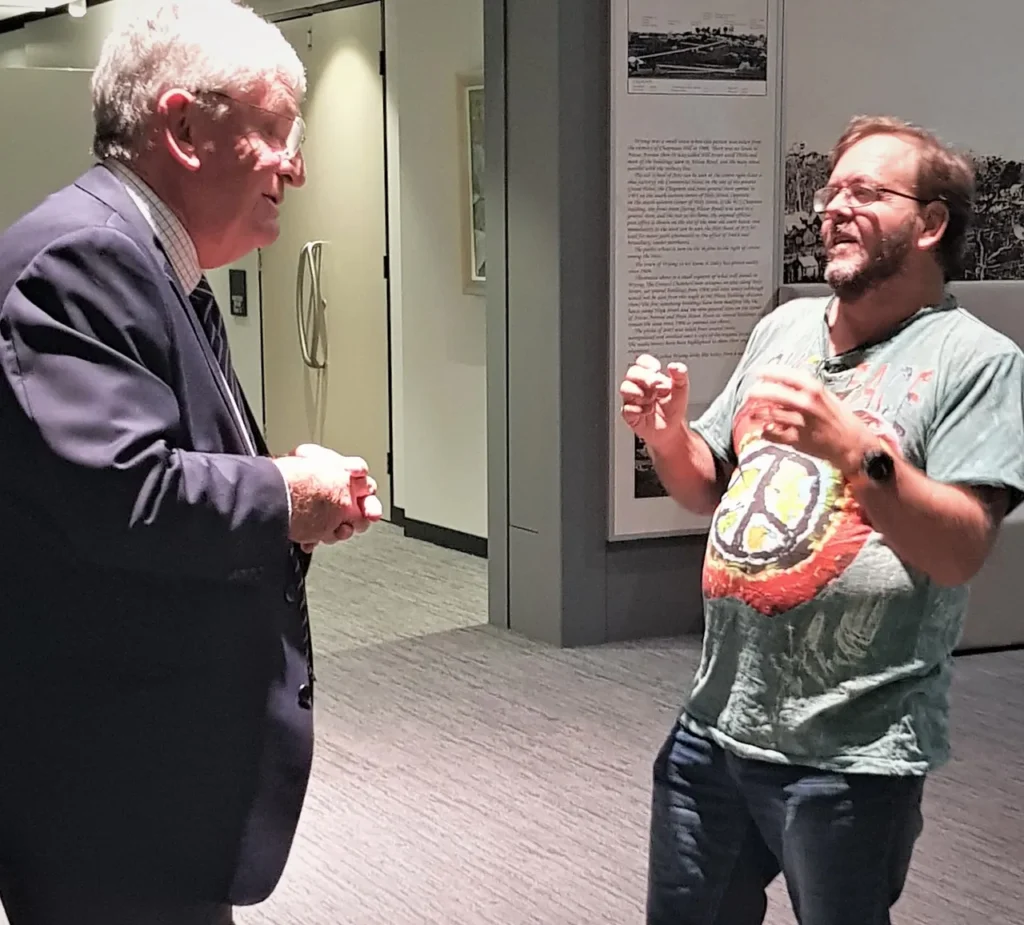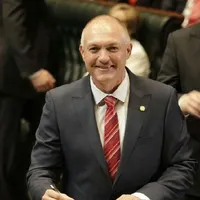
As Central Coast ratepayers were given the faux choice between a 10 per cent temporary rate rise or a 15 per cent permanent one, an independent expert analysis of the Central Coast Council’s financial situation slated the blame home to staff and NSW Government incompetence, or worse.
By Jackie Pearson
Shelly Hancock, NSW Minister for Local Government, has until the end of April to sack Central Coast Council and have a public inquiry, issue another suspension notice or reinstate them. She will make that decision knowing that her own Government’s Audit Office failed to detect one of the biggest “errors” in local government reporting history. The Central Coast’s two Coalition State parliamentarians, Chief Government Whip, Parliamentary Secretary for the Central Coast and Member for Terrigal, Mr Adam Crouch MP and Taylor Martin MLC have been publicly silent about this debacle.
Administrator, Dick Persson AM, wanted ratepayers to believe they were the Council’s shareholders and, as such, the only ones who could possibly get the place out of debt. Those 50,000-odd aged pensioners and the many more Central Coast households on fixed or low incomes, may have been heartened to know they owned shares in something. They may have thought it a bit odd that the Administrator wanted them to take responsibility for a debt rather than pay them a dividend.
The flaw in Mr Persson’s argument is that the Councillors we elected to govern our Mike-Baird-Monster-Council were treated appallingly by most of their senior staff. Many Council resolutions were ignored by staff who appeared to have their own agendas, close ties with developers and very little accountability to their ‘shareholders’.
Most of them are still in their jobs – advising the Administrator. Let’s hope they are treating him and whoever follows with more respect and professionalism than they did the Councillors.
So how did we get here?
A company called LG Solutions, which provides financial software to NSW Councils and publishes a ‘best practice’ newsletter, appears to have risked its reputation and published the truth about what went down at Central Coast Council in the past 18 months, if not longer.
The Point has obtained a copy of the November 2020 edition of the LG Solutions newsletter, which is called Debits and Credits and has most of NSW’s 120-plus local governments as subscribers.
The LG Solutions’ analysis appears to back up the conclusions drawn by DMB Consulting back in September and Grant Thornton before them.
According to all three of those consultancy firms, Central Coast Council staff, the internal ARIC committee, the NSW Office of Local Government and the NSW Audit Office have much more to answer for than any of the Central Coast Councillors.
LG Solutions looked at the audited financial statements of the Central Coast Council to determine if there was anything in those statements that indicated the Council was heading into financial trouble. What they found was, quite frankly, mind-boggling.
In everyday language, a Council must break down its cash expenditure into different ‘buckets’ – externally restricted funds, internally restricted funds and unrestricted cash. The latter is what the Council may spend for liquidity purposes on everyday expenses. It cannot spend internally restricted funds without a Council resolution, which never occurred. It can only spend externally restricted funds with the permission of the Minister. At no time prior to the September 2020 crisis did Central Coast staff inform Councillors that they were spending restricted funds.
Central Coast Council, in its audited reports, understated its externally restricted funds by $129 million. That means it either over-stated the amount it had in internally restricted funds or in unrestricted day-to-day cash.
How did LG Solutions pick this up?
Council must produce a separate, audited financial report for its externally restricted water and sewer fund. The total cash available in the water and sewer fund special purpose financial statements was less than the total in the same fund when it was reported in Council’s overall financial statement. The overall consolidated figure in the Council’s audited accounts was correct but it was broken down incorrectly.
As a finance journalist for 28 years, I have read many audit reports, some very complex. If I were a Councillor looking at the note about reserves and investments in the audited financial statements of the Central Coast Council, it would have been very easy for me to conclude I had $129 million more to spend in unrestricted cash than I actually did.
Council’s financial statements are 100 pages long and it is not necessarily the role of councillors, or, for that matter, ARIC, to check and double check every figure. That’s why the NSW Audit Office has, for the past few years, taken responsibility for auditing local government finances across the state – supposedly to improve governance and accountability. They get a big FAIL for this one.
At first glance, Central Coast Council’s books look pretty good, a healthy cash position, everything honky dory. It is only when you go to the next step to validate the figures you realise something is wrong. It is difficult to believe this mistake happened. Auditors are pedants. Local government auditors would surely check that the total of restricted water and sewer funds was the same across two sets of accounts. Surely?
According to LG Solutions, this problem did not suddenly occur in 2020. They looked at all three years of post-amalgamation audited reports and the problem was across all three years, getting bigger every year.
LG Solutions checked other Councils’ reports to convince themselves the anomaly was not widespread. It wasn’t.
As LG Solutions asked its readers to note: “Central Coast Council is one of the State Government’s handpicked merger Councils and had specific a series of “heady” financial predictions for a Wyong / Gosford merger that included: a total financial benefit of $135 million over a 20 year period that can be reinvested in better services and more infrastructure; a projected 119 per cent improvement in annual operating results; potentially reducing the reliance on rate increases through Special Rate Variations (SRVs) to fund local infrastructure; greater capacity to effectively manage and reduce the infrastructure backlog across the two councils; the savings, combined with the NSW Government’s policy to freeze existing rate paths for four years will ensure that ratepayers get a better deal.”
The LG report goes on to say that “On the face of it…Central Coast’s audited financial statements for YE 18/19 suggests nothing untoward: a net operating surplus result for the year of 62,397K (a stable result when compared to the previous year’s $66,214,000 figure); a net operating deficit result before capital income of -$5,126,000 (which while a disappointing result was a 75% improvement on the previous years).
“In terms of rankings…there were 21 Councils who reported worse deficits before capital…Capex cash outflows of $169 million (at an average of $170m pa over the 4 years since merger compared to an $144m pa pre merger); no new debt since the start of the merger; and the repayment of $100 million in loan liabilities over the same period.
The Council had $478 million dollars in cash and investments at June 30, 2018 (with an average annual balance of $418 million over the 4 years of merger.
The Council’s performance ratios were close to or exceeding the industry benchmarks.
Now we know, with certainty, that the elected Councillors of the Central Coast were led to believe they had more money to spend on infrastructure than they really did. In fact, their staff were spending, illegally, restricted funds.
The questions that need to be answered next are how and why? This should take place before our Councillors are sacked. It should have been the main theme of Mr Persson’s final report to the Minister but it was not. It will be a disservice to this community if a full explanation is not provided by the Administrator and Minister for how this situation took place. The Executive Leadership Team prepared capital works budgets and presented them to Councillors for approval. Councillors depended on the expert knowledge of their staff to make sure they did not overspend.
In fact, the LG Solutions findings are justification for the immediate reinstatement of our Councillors. LG Solutions did not speculate as to how or why the figures came out the way they did but their report proves the figures were wrong and they should not have been.
This NSW Government must own up to its failings in this sorry debacle. The NSW Audit Office and the Office of Local Government have failed the Central Coast community. It is the NSW Government that has failed to detect this problem on one hand while giving developers a 1 per cent contributions cut in Gosford and pocketing 2 per cent of developer contributions for themselves, while taking planning powers away from our local representatives and breaking promises for better funding.
And now Minister Hancock, Premier Berejiklian and Misters Crouch and Martin are happy for the community to foot the bill.
IPART is taking submissions from the public until the end of February on the matter of whether or not to agree to a 15 per cent Special Rate Variation for Central Coast Council. This means our rates would go up by the two percent rate peg plus 13 per cent in 2021-22 and then keep going up by the rate peg thereafter.
Administrator Persson has explained that former Wyong Council residents will end up paying less and the increases for former Gosford Council residents will be “modest” but that is not the point. The IPART submission period is an opportunity to add your voice to the thousands who’ve already written opposing the rate increase. Unless Shelly Hancock holds a public inquiry or opposition calls for a commission of enquiry are heeded, the IPART process may be the community’s only opportunity to let the NSW Government know it has let us down.
Central Coast Council is too big. It was set up to fail. Then our community voted for a majority of progressive councillors so the NSW Government backed away from its funding promises. Our Councillors were on a hiding to nothing. Let IPART know what you think.
This article was first published in the Village and Rural Grapevine.
The Point is produced on the land of the Wannangini (Guringai) people and we pay our respects to their Elders past, present and emerging. Always was, always will be Aboriginal Land.


